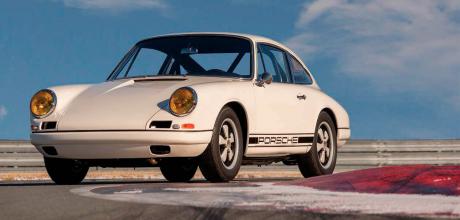Gaspare Fasulo’s self-built 1967 Porsche 911 R tribute
Gaswerks Garage is renowned for its work on iconic classic Porsches, hence our excitement at this 911 R tribute, the latest creation from the New Jersey company’s master restoration and service technician, Gaspare Fasulo...
Words Johnny Tipler
Photography Sean Smith
DREAM MACHINE
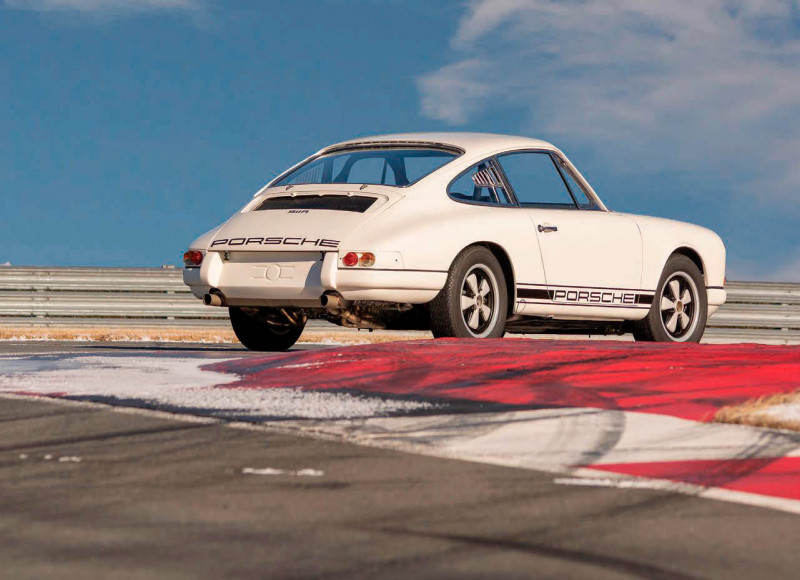
There are plenty of backdates, pastiches and restomods just as well-presented as the original model they represent. In this case, however, the end product is undoubtedly better finished than its progenitor. It is a recreation of the 911 R, the Porsche competition department’s very first offering of a purpose-built racing 911. We’ll take tour of the replica in a moment, but first, here’s a bit of detail on the factory motorsport machine.
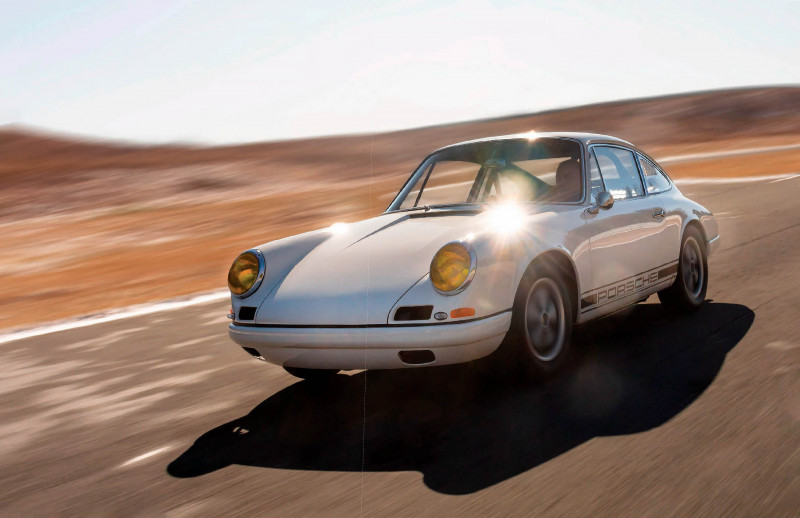
Dating from 1967, the 911 R was a tad rough-and-ready, a bit thrown-together, as a lot of race cars tended to be back then. Like most other manufacturers with a competitive bent, Porsche was developing its competition metal at breathless pace, hoovering up outright wins in the Targa Florio road race in Sicily, as well as routine class wins at the 24 Hours of Le Mans and other big-league endurance events. Even so, despite the 911 being in production since 1964, Porsche had not been disposed to offer a competition version. Things changed with the 911 R.
TWO DIFFERENT CARS IN ONE, ALLOWING MORE SEDATE DRIVING IN THE LOWER REV RANGE, USEFUL FOR THE STREET
The model lasted just a couple of years. Twenty-five units were made during this time. The 911 R’s race debut was at Mugello, where ‘Quick’ Vic Elford and Gijs van Lennep finished the 500km race in third place on the 66km road circuit. Elford and David Stone placed their 911 R third on the 1967 Tour de Corse, putting the 911 on the map as a rally car, too. At the 1967 Marathon de la Route (a gruelling eighty-four hours around the Nürburgring Nordschleife), Elford, together with Hans Herrmann and Jochen Neerpasch, eased into a convincing victory, all the more impressive when you consider the fact their 911 R was equipped with Sportomatic semi-automatic transmission. Well done with that, boys!
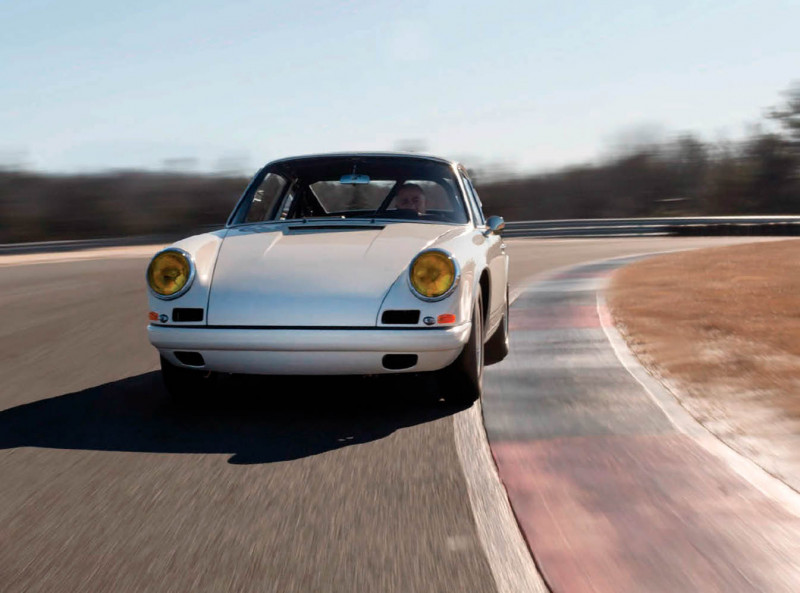
Privateer, Karl von Wendt, won the 1967 European Touring Car Championship in the brief window the 911 R was homologated as a touring car. Later in the year, one of the works team’s 911 Rs was used for a record-breaking attempt at Monza, with Jo Siffert, Rico Steinemann, Dieter Spoerry and Charles Vogele taking turns at the wheel, averaging 130mph over ninety-six hours. That’s four days of constant running! Privately entered Rs were active on the international race scene, but in the big league, despite Dieter Spoerry and Ben Pon finishing third in the Mugello 500kms in 1968, Gérard Larrousse was the star, winning the 1969 Tour de France. And that was about it. Done. The 911 R had served its purpose as the harbinger of significant and sustained competition success for its 911 descendants.
GENTLE HILLSIDE WITH CONIFER SHELTER BELT, A BLEND OF LONG STRAIGHTS AND SWEEPING HIGH SPEED CURVES
What made the 911 R so special was not so much its achievements, but its specification, though the former certainly got the ball rolling for the 911 as a race car. The ultra-light, short-wheelbase R used the 906 prototype’s two-litre 220bhp flat-six engine, featuring a host of special modifications, including uprated valvetrain, camshafts, ported heads, pistons and titanium connecting rods, accompanied by a 901 gearbox bolstered by a lightened flywheel, beefier clutch, limited-slip differential and Nadella driveshafts. The triple Weber carbs had their own little flat roof over the trumpets to stop rain ingress from the engine lid intake going down the barrels, while a twin-spark distributor doubled up on the cables in the engine bay. Oil coolers lived within each front wing.
FLEET OF FOOT
A hundred-litre long-range anti-surge fuel tank with dual pumps could be specified. The exhaust system was served by beautiful serpentine exhaust manifolds. Just as crucially, the R was lightened to within an inch of its life – fibreglass wings (fenders) featured front and rear, made by Karl Baur in Stuttgart and joined by fibreglass bumper panels, front and back lids, minuscule Hella sidelights and indicators sourced from the unsuspecting NSU Prinz parts bin. Door handles were plastic and windows were thin (four-millimetre glass for the windscreen, two-millimetre Plexiglass for the sides, the rear three-quarter windows distinctively louvred to aid ventilation and assembled complete with drip trays). Even the badging consisted of vinyl stickers.
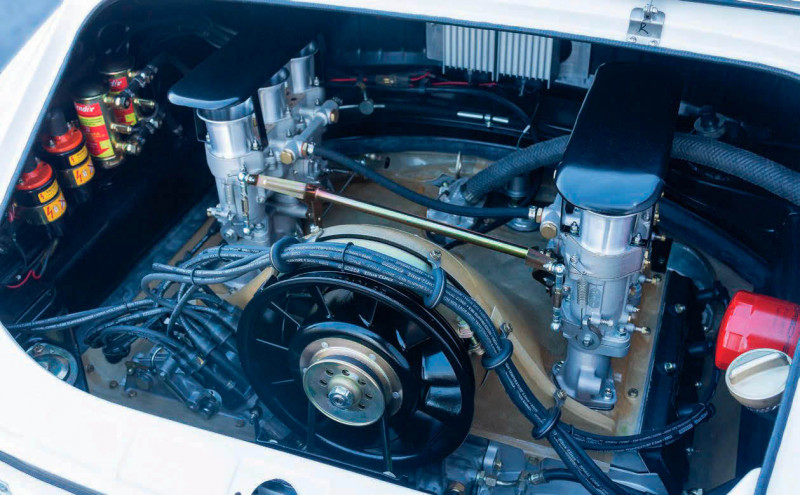
In the cockpit, austerity reigned. Minimal Scheel buckets were banded by Britax race harnesses ahead of the simplest of rollover hoops, braced from the rear seat mounts. There were no door cards, roof lining, certainly no radio, ciggie lighter or glove compartment. Thongs propped up the side windows, while a T-pull door opener acted directly on the lock mechanisms. There was next to no carpeting on the sills, while a drilled plywood footrest was afforded to the co-driver and a welded-on footrest for the driver. The 911 R weighed less than eight hundred kilos, while a regular 911 tipped the scales at 1,030kg. That said, the R cost privateers DM45,000, twice as much as a standard 911.
After 1967, the FIA rejected the 911 R’s homologation and, unlike, say, the 911 S and 911 T, the R was obliged to run with works prototypes, such as the 906’s successors, the 910, 907 and 908. Porsche therefore needed to field a less extreme machine in the Group 3 GT category. When the FIA reclassified the 911 T into the same class as the 911 S in 1968, the factory competition department created the T/R. This 911 didn’t possess as radical specification as the 911 R, and only thirty-six examples were assembled. The 911 S/T (twelve cars) followed in 1971. Finally, the Carrera RS 2.7 and RSR 2.8 further consolidated the marque’s burgeoning reputation on race track and rally stage.
CALM THE WATER
And so, to our feature car. Located in New Jersey, the opposite side of the Hudson River to New York City, Gaswerks Garage is a repair and restoration shop specialising in classic Porsches and vintage Volkswagens, with focus on especially rare and collectible models. The maintenance team is headed by air-cooled Porsche and Volkswagen expert, Gaspare Fasulo. With more than thirty year’s Porsche experience, there’s nothing he doesn’t know about retro machines from Zuffenhausen, and since joining Gaswerks Garage in 2016, he has assembled a formidable team of technicians and artisans, whose specialties cover the mechanical and cosmetic restoration of both air-cooled and water-cooled sports cars from Stuttgart, with engines ranging from the 356’s 1.1-litre flat-four and Type 547 ‘Fuhrmann’ four-cam through to full-on modern flat-sixes in competition specification.
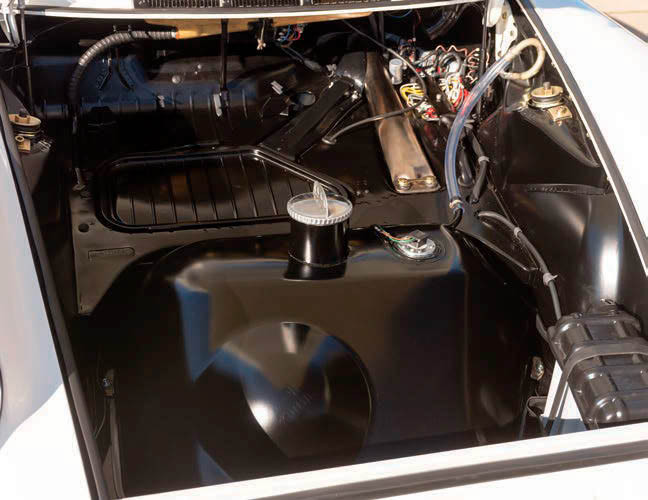
Gaspare always wanted a 911 R, but due to their scarcity and attendant value, he was never in a position to buy one. Pragmatically, then, he decided to build one himself. Of course, he could have started with a 912 to save cash, but he was adamant his build should carry a 911 VIN number. Consequently, Gaspare’s amazing 911 R is based on a solid, original 1967 short-wheelbase 911 sourced from a seller in Colorado. It was even painted Light Ivory, just like the original 911 R.
The car arrived at the Gaswerks Garage workshop and was fully inspected before being stripped down to the bare bones and gradually built up again, endowed with all the lightweight panels and trick bits gracing the 911 it apes. Almost. I chatted about the car’s specification with Gaswerks Garage Service Manager, Vincent Cavallaro. “The engine is a two-litre twin-plug unit,” he says. “It’s built on a 1969 magnesium case and fed by Weber 46 IDA3C carburettors. The transmission is stock, from the 1967 donor car.”
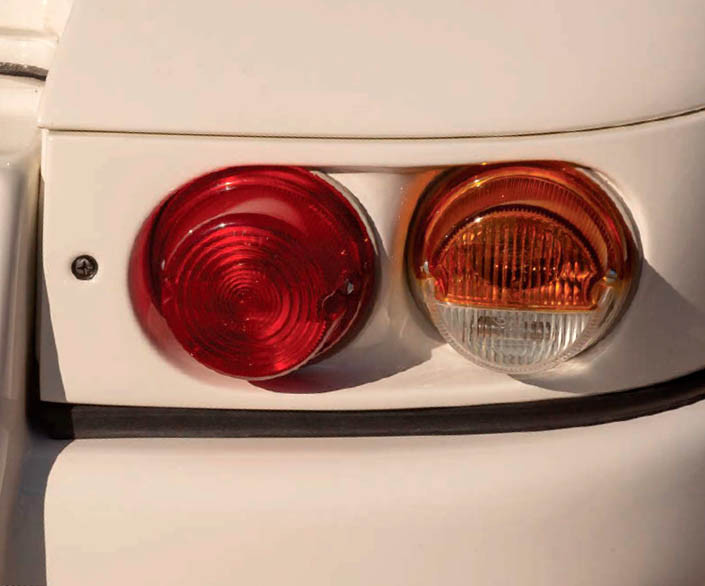
The two-litre flat-six was constructed to 906 specification, necessitating the appointment of a new crankshaft, cylinders, connecting rods, crankcase modifications and higher compression pistons. Gaspare added twin-plug heads and ignition, ported the manifolds and overhauled the valvetrain, bringing output to a healthy 220bhp, though he is sure there’s more to come from further tuning. The redline is set at 7,800rpm, explored by a 901 gearbox benefiting from a rebuilt linkage and an R-style shift lever providing precise gear changes.
BETTER TO HAVE STURDY STEEL PROTECTING YOU IN THE EVENT OF IMPACT, RATHER THAN FRAGILE FIBREGLASS
“The body panels were sourced from Rothsport Racing in Oregon, as well as EB Motorsport in the UK,” Vincent reveals. “The EB Motorsport team recently completed its own 911 R replica, which gave us confidence in the accuracy of the parts purchased. To be honest, from past experience of EB Motorsport products, we knew the pieces would be a perfect fit.” Most of the running gear came from the 911 SC parts bin, while the Fuchsalikes are replicas from Group 4 Wheels, each five-leaf wrapped in Continental rubber. The steering wheel and its hub are MOMO items, while the Hockenheim seats are from GTS Classics, run by Stefan Schleissing. “For a lot of mechanical parts, we generally use our local Porsche Centre or SSF Automotive in California,” Vincent confirms.
Weight saving was taken very seriously, as illustrated by the use of aluminium door hinges. Indeed, the only panels not swapped out for fibreglass were the car’s original doors. There was safety to consider, after all — Gaspare’s tribute would see a lot of street use. Better to have sturdy steel protecting you in the event of impact, rather than fragile fibreglass.
The build took approximately fourteen months and, on completion, tipped scales at an astonishingly low 837kg, little more than the original Weissach-built 911 R. Gaspare gave his finished 911 a shakedown at the (relatively) local Monticello Motor Club in Sullivan County, New York State, seventy-seven miles northwest of his Paramus base. “With snow on the infield, it certainly wasn’t the perfect day to test the limits of this fresh build,” he told our photographer, Sean Smith, “but when you have four miles of Monticello Motor Club circuit all to yourself, who am I to argue?!”
There was little chance Gaspare would get heat into the car’s tyres, meaning it was prone to moving sideways, but even in these tricky conditions, he was fast able to ascertain how his bespoke 911 felt much stiffer and immediately quicker.
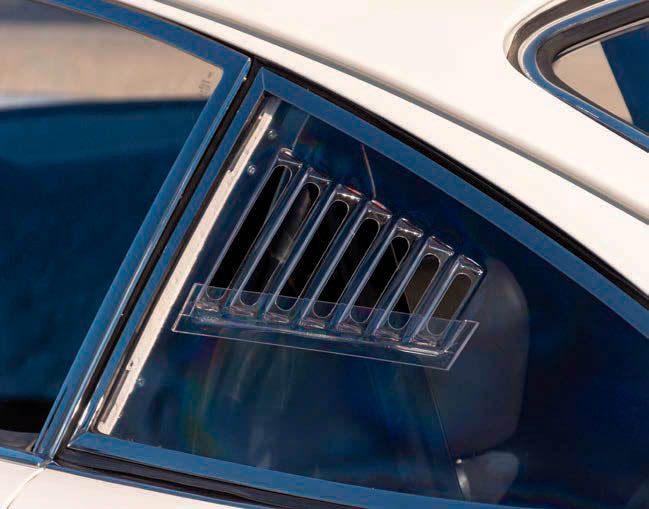
I’ve driven a few of examples of the 911 R with fairly exalted provenance (including 016 R, La Ronde Cévenole 1968 and 1969 car, as well as the no.96 R from the 1967 Tour de Corse). My time behind the wheel has notably been in Belgium and France, but I’ve a good feeling about Gaspare’s creation. In my experience, the Type 901/22 two-litre flat-six takes a bit of deft footwork on the throttle, coinciding with deploying the ignition, to make it fire up. The barely silenced exhaust note is deafening — like an aural orgasm. It needs the accelerator pedal to be continuously blipped to maintain running mode. Once warmed up (make that ten minutes) there’s dog-leg first, a sharp clutch, followed by vivid acceleration, aggressive snarl on the overrun, revs soaring to 7,000rpm in each gear. Perfectly weighted steering, sharp turn-in on relatively narrow tyres and a tip-toe balancing act through zig-zag bends. Make note, the 911 R was a quick car in its day, taking just 5.9 seconds to reach 62mph from rest, with the standing kilometre despatched in 24.2 seconds, a full second faster than the 904 and five seconds faster than a contemporary Alfa Romeo Giulia Sprint GTA.
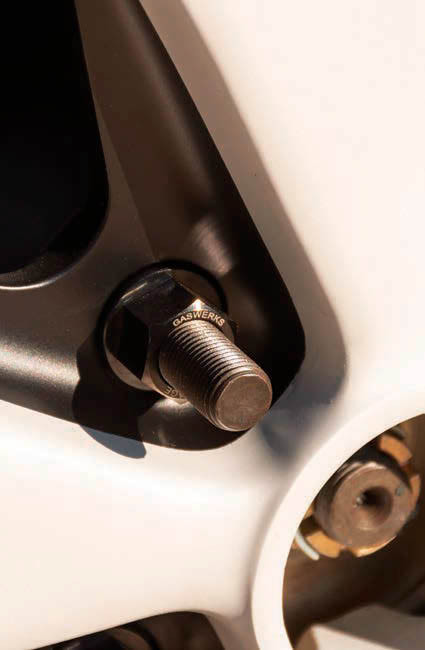
Coincidentally, I’ve also visited Monticello Motor Club, where Gaspare conducted the shakedown of his 911 R tribute and where our photoshoot took place. I was on a road trip and took time out to drive a quasi-race Lotus 2-Eleven around the circuit. Monticello opened in 2008 as a members-only venue. Located in the south of the picturesque Catskill Hills, it’s only a couple of hours from Manhattan, which makes it a cert for any moneyed New England enthusiast wanting to indulge their passion for legalised speed. With extensive run-off areas, barriers and fencing, safety is paramount, given the clientele, who may not be experienced track drivers.
Designed by Lancastrian racing legend and former Porsche works driver, Brian Redman, Monticello Motor Club is laid out on the site of the famous Kutchscher’s Hotel, the former holiday camp which provided inspiration for Dirty Dancing’s Kellerman’s resort. All that ephemera so popular with post-war holidaying New Yorkers has almost gone — Monticello Motor Club is not to be confused with the gaming and equestrian track of a similar name a few miles away. This is an invitation-only haven for enthusiasts wishing to house their automotive pride-and-joy at a dedicated circuit, where they can enjoy virtually unlimited track time.
They’re in for a treat. Monticello is as fine a stretch of blacktop as you could wish for, snaking away over a gentle hillside with conifer shelter belt, a blend of long straights, twenty sweeping cojones-testing high speed curves, with a couple of seemingly impossibly tight hairpins thrown in. Redman, who lifted the World Sportscar Championship for Porsche in 1969, dug deep for inspiration from his experiences at the world’s wilder tracks, chiefly the Nürburgring Nordschleife, Watkins Glen, the Targa Florio, Brands Hatch. Here and there, you can spot elements of each in his design.
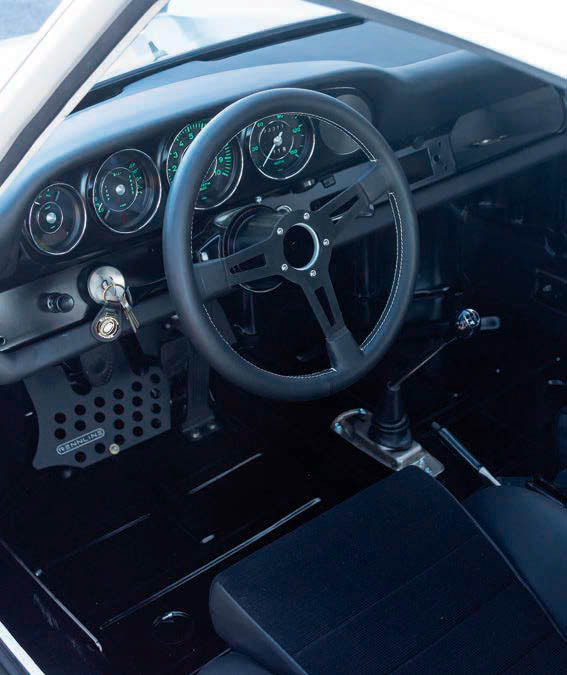
“Now we’ve got not only one of the finest tracks in North America, but also one of the finest in the world. This isn’t a race circuit like Lime Rock Park,” he cautioned, citing the fabulous track a hundred miles northeast in Connecticut, though there are certain similarities in the topography. “Lime Rock is primarily for sanctioned motorsport events. Monticello is really a country club, but instead of polo ponies, a golf course and lakes, this is a race track,” he added With around 100ft of elevation change from the highest to lowest points on the circuit, Monticello Motor Club is surrounded by woodland, four hundred acres of which is owned by the club, with a sizeable infield garage and apartment complex within the main circuit’s 650-acre site. The members’ pavilion is on the north side, incorporating a timing tower at its centre. There are two storeys with classrooms, dining area, bathrooms, showers, locker rooms and a large reception space.
There’s a deck overlooking the track for prime viewing, with pit garages underneath. Overlooking the track, blocks of private residences incorporate twelve-car garages on the ground floor, with living space above, a scenario close to nirvana for many car buffs.
CHALLENGING CIRCUIT
There’s just over four miles of track, and the longest circuit configuration is three-and-a-half miles. It can be split into multiple configurations, allowing different events to be run at the same time. The south course is about 1.7 miles, the north course is a 1.9-mile configuration. In other words, half of this track is longer than the whole of Lime Rock. It’s more technical, too. You have increasing and decreasing radius turns rewarding precision, meaning you really have to put your car in exactly the right place.
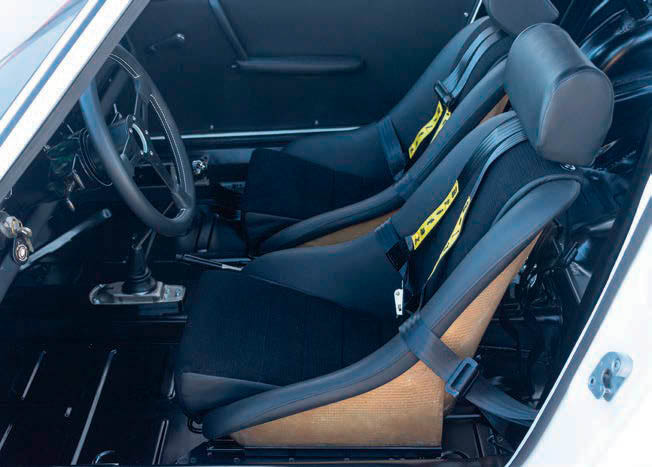
Much of what’s on offer is pure Nürburgring. Redman really did design an exhilarating circuit. As 1978 Formula One champ, Mario Andretti, said when he opened the venue in July 2008, “it’s the ultimate playground for the car enthusiast. It’s got lots of blind spots where you can overdo things. It would probably take me a year before I could let my hair down here. It’s got plenty of what I call the ‘pucker factor’.”
Even though Gaspare’s 911 is propelled by a two-litre flat-six emulating the powerplant found in a 906, the unit only lets you know the scale of its might between 3,700rpm and 7,800rpm, when it comes on cam. In effect, this gives him two different cars in one, allowing more sedate driving to take place in the lower rev range, which is super-useful for the street.
Therein lies the major difference between the factory car and what’s seen here, but who cares? This is clearly a very fine homage to an air-cooled motorsport icon whose heyday coincided with both Redman and Andretti hitting the big time. Gaspare’s creation wouldn’t embarrass either superstar in a track-driving context, and, just as importantly, it will turn heads whenever he drives it on New Jersey’s upstate highways. We can’t wait to see Gaspare’s next air-cooled restomod take shape.
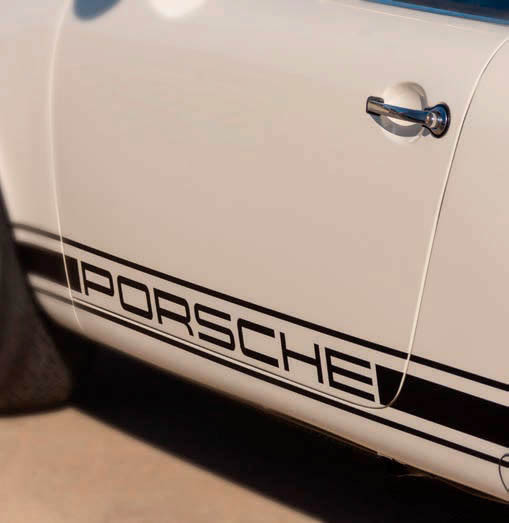
Above Monticello is the perfect playground for this personalised Porsche.
Above Gaspare’s build is powered by a two-litre flat-six assembled along the lines of the unit found in the 906.
Above and below 911 race car office with added comfort in a build weighing just 837kg. Above With so few 911 Rs manufactured in period, not to mention the astronomical cost of acquiring a surviving example today, Gaspare reasoned he would build his own street-legal version.
Above and below This has been a real labour of love for a man who spends his days restoring and repairing other people’s Porsches.
Above Gaspare was keen to use a 911 as the starting point for the project, as opposed to kicking things off with a less costly 912


